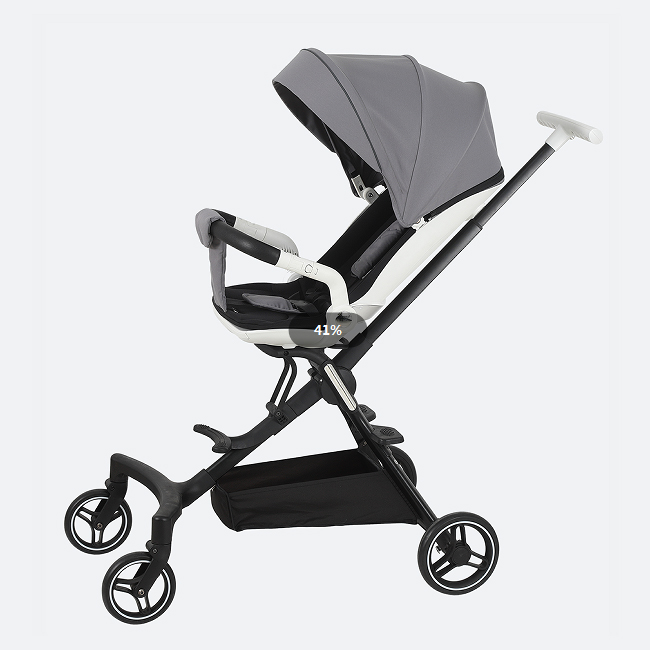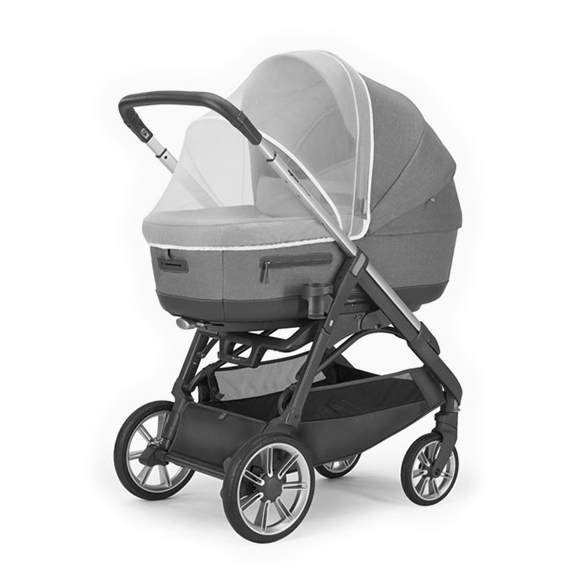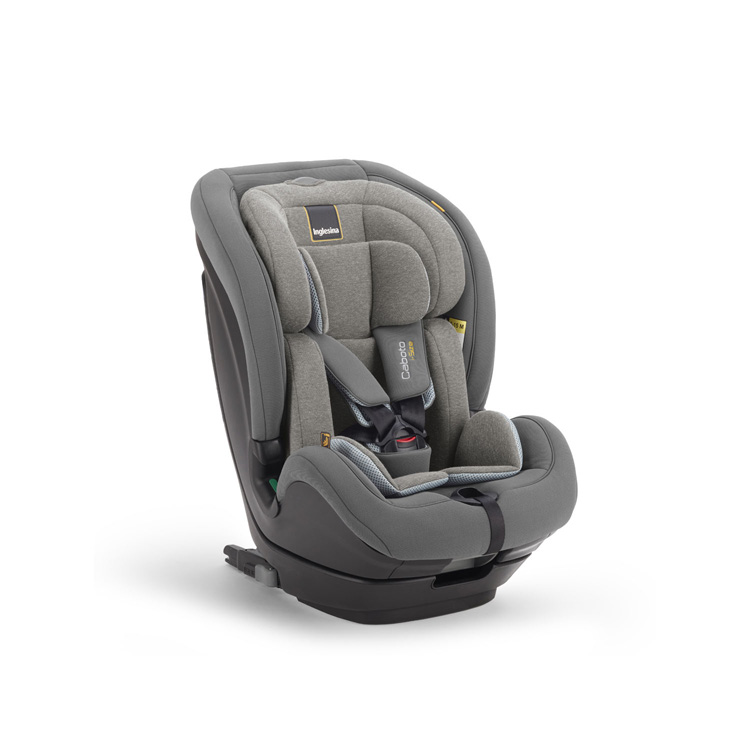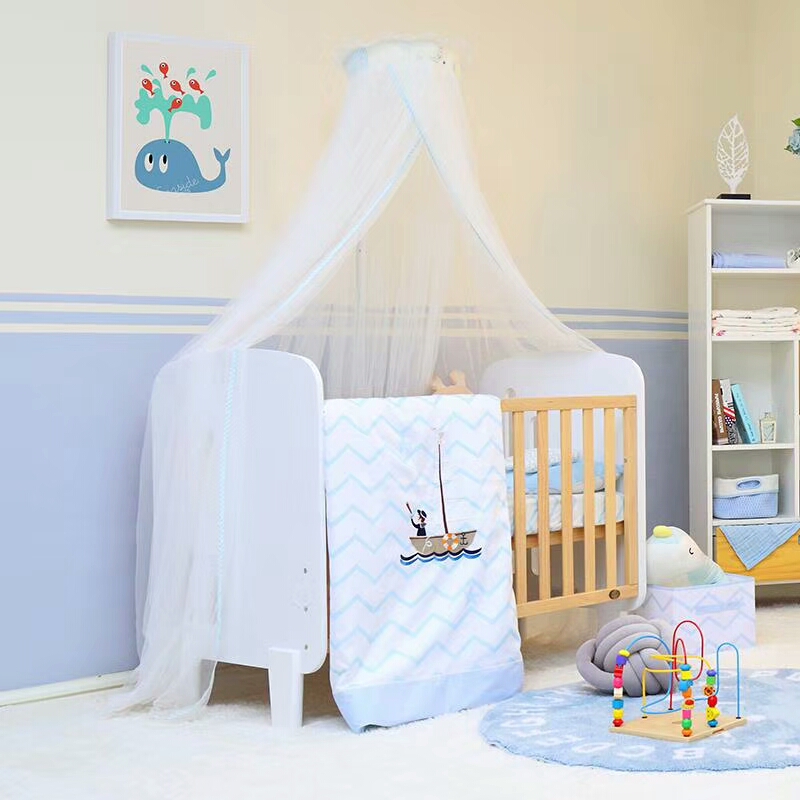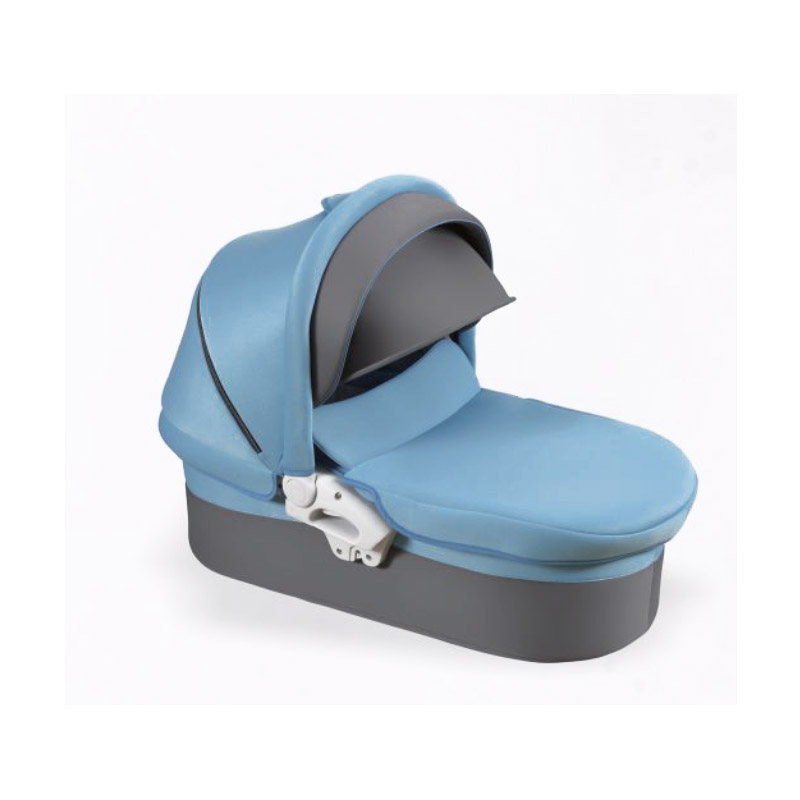When welcoming a new baby, choosing the right infant travel gear often overwhelms new parents. Among common baby products, prams and carry cots are two easily confused items. This guide will analyze their differences in functional positioning, usage scenarios, and design details to help you make a more informed purchase decision.
I. Core Functional Differences
1. Pram: Multi-functional Mobile Cockpit
Standard prams usually come with adjustable seats (120°-170° recline range), five-point harnesses, sun canopies, and large storage baskets. The core design concept is to provide a mobile seating space for babies over 3 months old, supporting both sitting and reclining modes. High-end models feature two-way pushing (facing parent/face outward), shock absorption systems, and seat height adjustment, suitable for daily outings, park walks, and other frequent use scenarios.
2. Carry Cot: Newborn-Exclusive Portable Bassinet
As specialized equipment for newborns, a carry cot is essentially a detachable portable bassinet. It uses a fully flat design (180° flat) with breathable mattresses and soft liners inside, typically measuring 75-85cm in length and 40-50cm in width, suitable for babies aged 0-6 months (weight <9kg). The bottom of the carry cot is equipped with universal clips that can be quickly attached to compatible pram frames, and can also be used as a standalone car seat (meeting ISOFIX standards), enabling seamless transfer "from bedroom to car".
II. Key Design Feature Comparison
Comparison Dimension | ||
Age Range | 3 months - 4 years (weight-dependent) | 0 - 6 months (weight ≤9kg) |
Sleep Position | Semi-reclined/sitting (120°-170°) | Fully flat (180°) |
Portability | 8-15kg total weight, larger folded size | 3-5kg weight, detachable for one-handed carrying |
Breathability | Ventilated mesh design on seat back | Mesh ventilation windows on all sides + mattress air holes |
Safety Features | Five-point harness + parking brake | Vehicle-specific clips + impact-resistant shell |
Usage Scenarios | Daily outings, shopping mall trips | Newborn outings, car travel, short naps |
III. Purchase Decision Factors
1. Newborn Stage (0-3 Months)
Prioritize a carry cot: Newborns have undeveloped spinal columns, and the fully flat design prevents spinal curvature. The bassinet design facilitates easy transfer between prams, cars, and indoor spaces, reducing baby fussing. When purchasing, check for EU ECE R44/04 or Chinese 3C certification to ensure vehicle safety.
2. Growth Needs (3 Months+)
Pram is more suitable for long-term use: As babies develop head-up ability, adjustable seats meet different sitting posture needs. Choose models with good shock absorption (four-wheel independent suspension is better), and seat height adjustable to dining table height for convenient use during outdoor meals.
3. Cost-effective Solution
Many brands offer "carry cot + pram" combo sets, which are about 30% cheaper than buying separately. Premium brands like Bugaboo Donkey 5 and Babyzen YOYO2 provide detachable carry cot accessories, covering all stages from newborn to toddler. This combination is ideal for quality-focused families to avoid repeated investments.
IV. Usage Tips
Carry Cot Warnings: Never place soft pillows or stuffed toys inside to prevent suffocation risks; switch to seat mode after 6 months or when weight limit is reached.
Pram Selection Tips: Opt for front swivel wheels (for flexible steering) + rear wheel brakes. Sun canopies should have UPF50+ sun protection, and seat fabrics should be removable and washable breathable materials.
Vehicle Safety Notes: When using a carry cot in cars, always install it rear-facing on the back seat using ISOFIX connectors or seat belts – never install in the front passenger seat.



